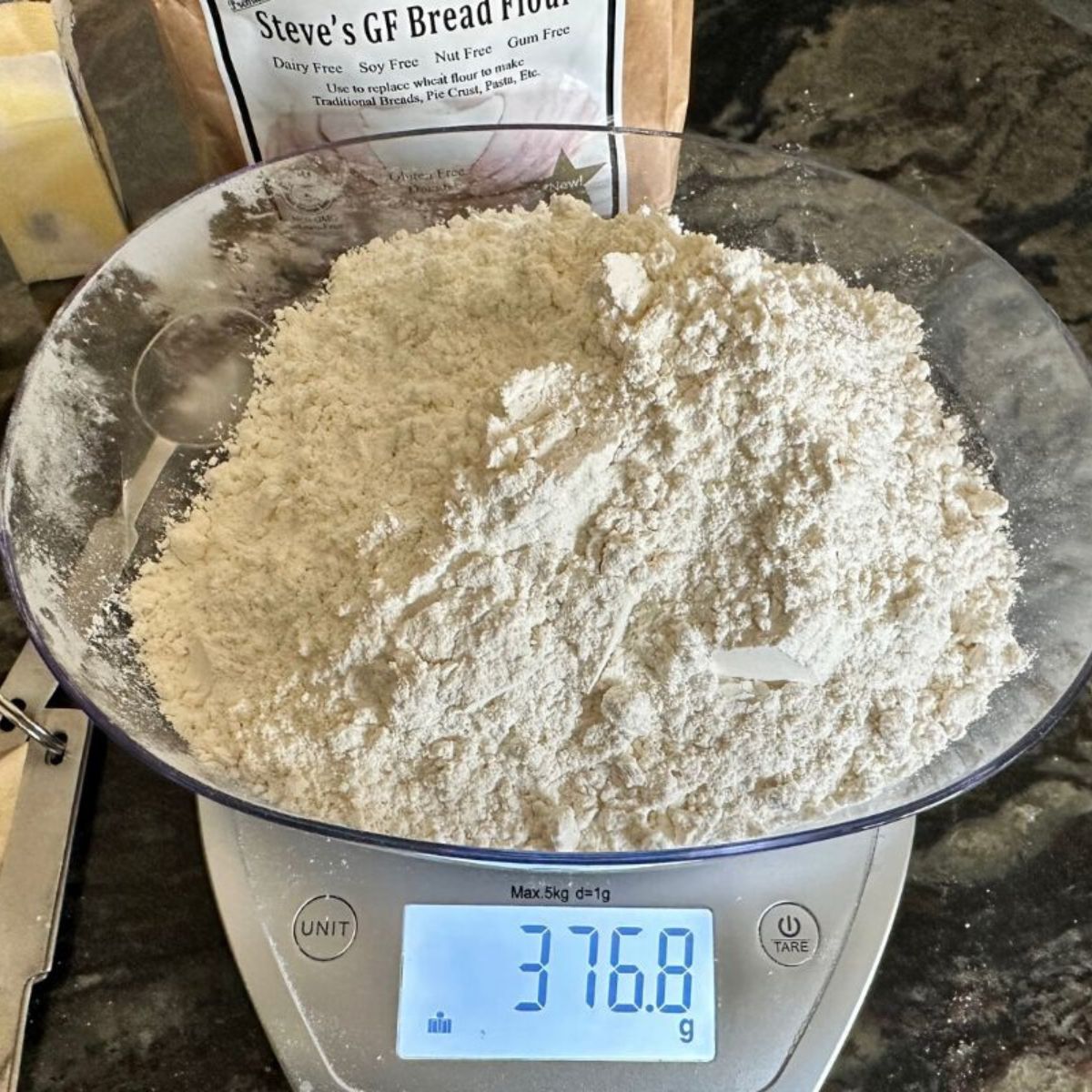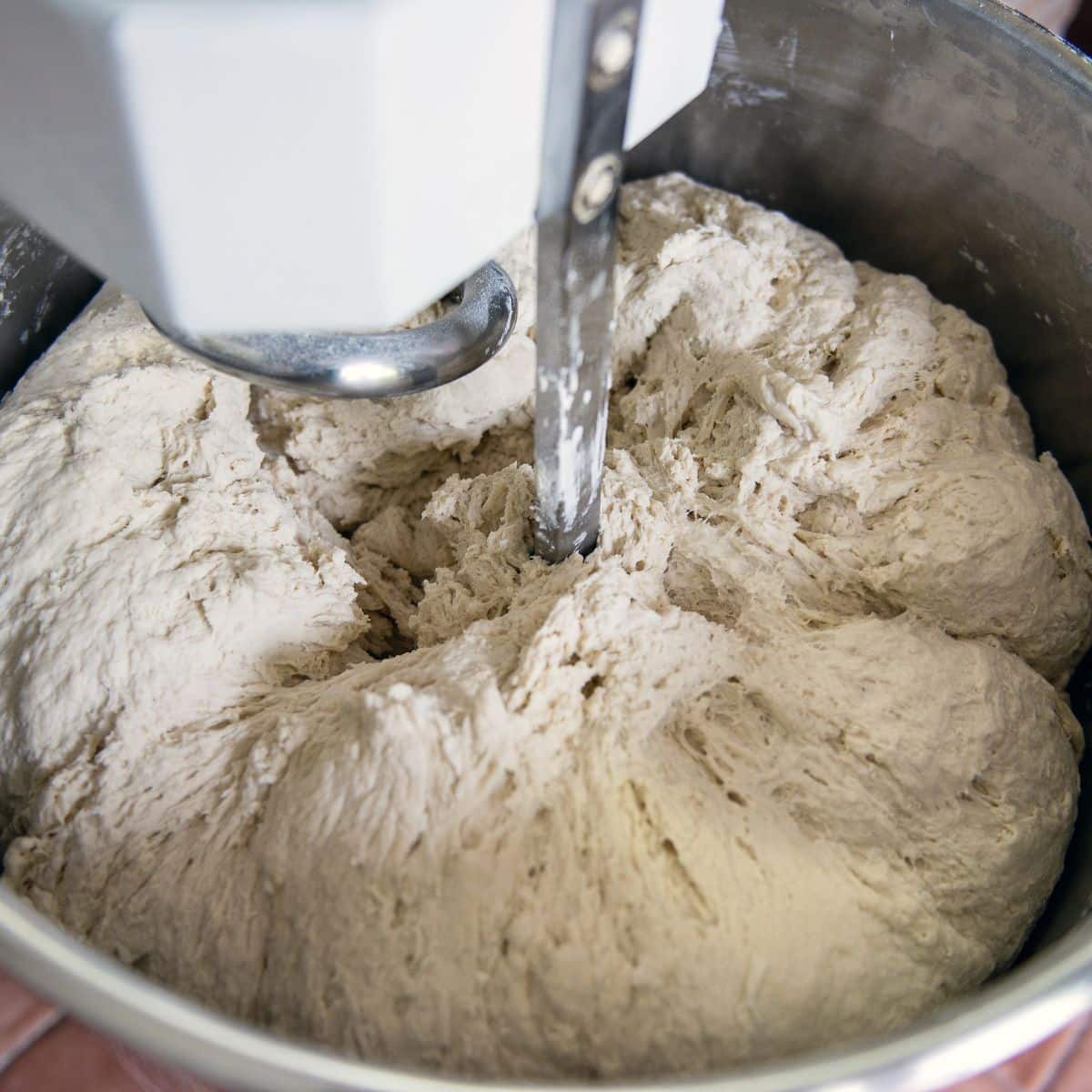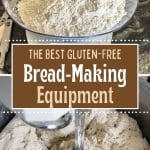A great sense of satisfaction comes with baking bread from scratch. Seeing the dough rise and transform into a delicious loaf of bread can give you a feeling of accomplishment and pride. I want to share my favorite bread-making tools so you can make that perfect gluten-free loaf of bread.
This post may contain affiliate links. Please read our Disclosure Policy.
New to gluten-free bread baking? Don’t miss my Ultimate Guide to Gluten-Free Bread Recipes That Work. It’s packed with tested tips, flour advice, and reader-favorite recipes.

The smell of freshly baked bread is hard to resist. The warm, comforting scent that fills your home can create a cozy and inviting atmosphere. I have found that using the right equipment to make your homemade bread is important because it can make the process faster and easier.
If you use the wrong gluten free flour blend, the bread may not rise as much. Many blends do not work with yeast, so read my flour suggestions to choose the right gluten-free flour. Gluten-free bread can contain less moisture than regular bread, and this will also depend on the gluten free flour blend you use.
If you run into any trouble baking your gluten free bread, read my Gluten-Free Bread Troubleshooting Guide so you can correct any problems.
If you love baking bread, don’t forget I have many easy gluten-free bread recipes to try!
Why Using The Right Bread Equipment Is Important:
Having the right bread-making tools to make your gluten free bread is important for several reasons:
- Efficiency: Using the right tools can make bread-making more efficient and help save you time. For example, using a stand mixer with a dough hook can mix the dough faster and more evenly than a spoon and a bowl.
- Consistency: Using the same tools consistently can help ensure that the bread turns out the same way every time. This is especially important for commercial bakers who have to produce consistent results for customers.
- Safety: Tools like a sharp knife, bread lame, or a hot oven can be dangerous if not used properly. Using the right tools and following proper safety guidelines can help prevent accidents in the kitchen.
- Quality: The right tools can help create better quality bread. For example, using a Dutch oven or baking stone can create a crispy crust and even heat distribution.
- Aesthetics: Using the right tools can also help create a more visually appealing bread. For example, a bread lame can create an attractive design on the bread’s surface.

Email This Recipe To Me!
My Favorite Bread-Making Equipment:
- Having a non-stick work surface can be helpful. I love these Amazon Basics Silicone Mats. They are inexpensive and hold up well. They are also helpful when rolling out cookie dough, shaping gluten free bread and rolls, cutting out biscuits, and rolling pie crust.
- Using the right dry measuring cups is very important. Dry measuring cups vary from liquid measuring cups.
- If the recipe you are making uses measurements, I love this EtekCity Digital Scale for measuring both wet and dry ingredients.
- I love using a stand mixer when making bread. My old Kitchen Aid is a workhorse, but I have also tested this Acuma Stand Mixer. It is a lot less expensive and is easy to use.
- If you mix your dough by hand, you will want a wire whisk to blend your dry ingredients thoroughly.
- I find baking bread in this Cast Iron Loaf Pan to work really well. Cast iron distributes the heat evenly.
- I have recently become a big fan of this non-stick Pullman loaf pan. This is for larger loaves, where the cast iron pan I shared above is a little smaller.
- A Dutch oven is a must if you are making artisan bread loaves. It helps keep steam in during the first 15-20 minutes of baking, which helps you get a nice crusty crust.
- My old Hamilton Beach bread machine was discontinued…or I should say updated. This is a newer version of my machine, and it has a gluten-free setting.
- If you are a stickler for evenly sized slices of bread, this wooden bread slicer is worth its weight in gold.
- If you want to make gluten-free baguettes, this baguette pan is great. It allows air circulation all around each loaf.
- Lastly, this bread lame is used for fancy designs cut into the tops of sourdough and artisan bread loaves.
If you make gluten-free sourdough bread, I also have a great list of my favorite Sourdough Tools.
🔑 Sandi says: If you are new to gluten free, I have tons of helpful Gluten Free Resources to guide you every step of the way.
Tasty Gluten-Free Bread Recipes:
Many people choose to bake homemade gluten free bread because it allows them to control the ingredients and avoid additives or preservatives that may be found in store-bought bread. Homemade bread can also be tailored to suit individual dietary needs or preferences, which is why so many on a gluten free diet make their bread from scratch.
- Gluten-Free Bread Machine Bread – This easy recipe gets rave reviews because it is a great sandwich bread. You can also bake it in the oven.
- Gluten-Free Oat Bread – This recipe makes an awesome loaf of bread. It is easy to make with just a few simple ingredients.
- Gluten-Free Challah – You can braid this bread, shape it either in an intricate braid or make a round challah.
- Gluten-Free Brioche – This fluffy bread is fun to make as a loaf or rolls.
- Gluten-Free Cinnamon Raisin Bread – This is a delicious loaf of bread if you love sweeter bread.
- Gluten-Free Focaccia Bread – My homemade focaccia bread is fluffy and can be topped with many different toppings, from herbs to intricate floral designs.
Have a tip?
We would love to hear if you have a great gluten-free bread-making tool or tip. Please leave a comment. Thank you!


I’ve been trying GF bread making to little success. Going to try your recipes … thank you for sharing so much information. Very helpful and explains a lot. What size of the Pullman Bread Pan do you use for the sandwich loaf? As I see they come in different sizes. Thanks again.
Hi Joyce, I am so glad you are going to try my recipes. The one I use is 8.5X4.75X4.375 INCH